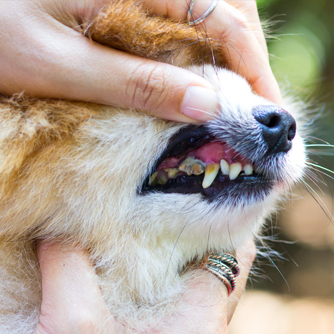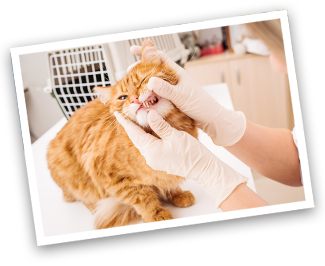Periodontal Disease Treatments at Your Animal Hospital in Punta Gorda

Periodontal or gum disease is a very common problem of dogs and cats. It is estimated that 85% of all dogs and cats over 3 years of age have some periodontal disease. It is more common today than ever before due to softer diets, less chewing and longer life spans (thanks to better veterinary care).
What causes Periodontal disease?
Plaque (a colorless film containing a large amount of bacteria) on the teeth mixes with food particles and saliva to form tartar (calculus). The tartar hardens on the crown of the tooth, where it can be easily seen as a brown accumulation on the tooth. When the tartar extends below the gumline it leads to an infection known as gingivitis. Gingivitis is characterized by redness at the gumline.
What are the signs of periodontal disease?
- Bad breath
- Yellow-brown crust on teeth
- Bleeding gums
- Tooth loss
- Change in chewing habits
- Abnormal drooling
- Change in behavior
How do we treat it?
If there is tartar accumulation home care (brushing) will not be enough. A professional cleaning is needed. Under anesthesia a complete oral exam is performed. This includes full mouth x-rays and the probing of each tooth for pockets. An ultrasonic dental machine is used to remove the tartar above and below the gumline. Severe infections may require a tooth/teeth to be extracted. After the teeth are scaled they are polished smooth to help prevent the rapid return of plaque and tartar. A fluoride treatment may be applied to harden the enamel. Lastly, a sealant like Oravet may be applied.
Is it painful?
Yes! Dental disease, like a tooth abscess in people cause a great deal of discomfort. Unfortunately, many animals suffer in silence.

